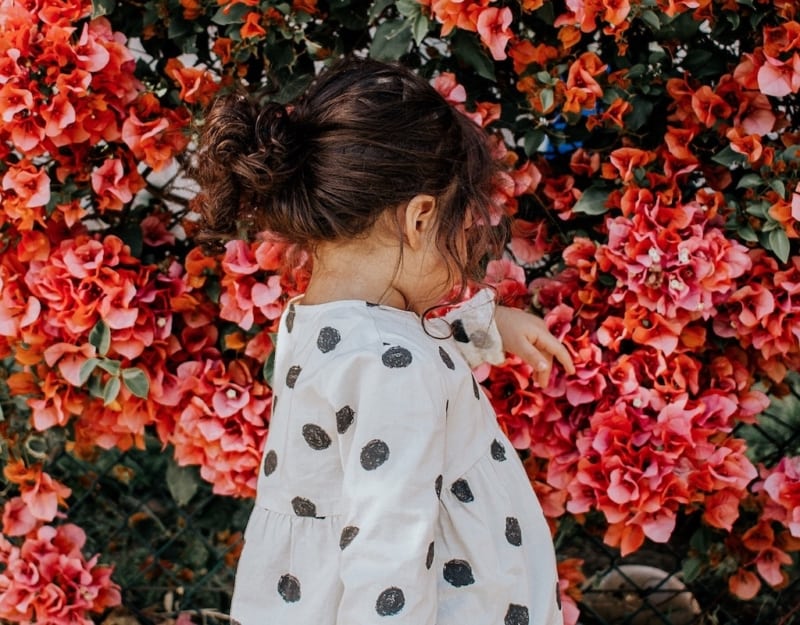Nits. Lice. Head lice. If you have a school-aged child, chances are you have already experienced the hell of head lice. If not, it’s only a matter of time. But take heart, contrary to schoolyard folklore, nits do not mean you are dirty. In fact, my most fastidious (about cleanliness) friends have all experienced the nit curse in equal measure to me (I am not so fastidious.)
But girls are more susceptible – probably because they tend to socialise with each other in a physically close way. That is, they tend to sit in groups, talking or playing games that require them to lean into each other to listen and talk; heads bumping together is also what allows lice to crawl from one head to another.
Boys don’t do this so much. (If you have boys, worms will probably be your thing … ew, sorry to be the bearer of bad tidings.)
The topic of nits and head lice is enough to send everyone into a head-scratching frenzy and certain mistruths seem to fly around when people go into a frenzy.
So here’s some nit facts:
- Lice do not fly.
- Lice do not jump.
- Lice do crawl from head to head.
- Lice do not discriminate.
Dirty hair, clean hair, long hair, short hair, curly hair, straight hair – they don’t care. As long as it’s a warm and there’s access to blood (via the scalp) they are as happy as a pig in mud.
But the news isn’t all bad – there are two main things you can do to reduce the risk of contracting head lice.
1. Use the conditioner and comb method to regularly check your child’s hair for lice.
Conditioner doesn’t kill the lice, but it stuns them for about 20 minutes, which means they stop moving around and you can comb them out.
Cover your child’s hair in conditioner. Then use a fine tooth comb, (or a special nit comb) to comb through the hair from scalp to the ends. Work through each section methodically and clean off the comb with a tissue as you go. If you find lice, repeat the process the following day and each day until they are gone. Even when there is no longer any sign of lice, do a comb-out after 7 days (when the eggs you missed the first time will hatch and create another ‘crop’).
Combing the critters out is the best defence. And vigilance. Once a fortnight, do a nit check and comb-out.
2. Tie back your child’s hair
This is the good news! It means you can go a bit ‘Barbie Fashion Face’ with your little girl and experiment with some groovy new hairstyles.
So how many ways are there to tie back long hair? A million. A new hairdo is as good as a holiday! Are we having fun yet?
Here’s five of the easiest and grooviest hairstyles
1. How to do a sock bun hairstyle
Back in the ’90s I used to covet this hairstyle. I didn’t realise there was a very simple trick to it. Watch the video to discover the sock bun secret.
2. How to do a French braid
A French braid is the ultimate nit-proof hairstyle. It involves sweeping up small sections of hair into your main braid and it leaves no wisp uncaptured!
3. How to do a Pheobe Buffay pineapple bun
Phoebe was the flaky one in the TV show Friends. She had long hair and always wore it in some kooky new style. This was one of the best. It’s easy as. The perfect school morning hairdo that looks more complicated than it actually is.
4. How to do a fishbone braid
This is another one that will sweep up all those pesky flyaways. You may need to spritz the hair with water spray to make it more manageable while you’re braiding. As with all hairstyles, this one is easier with hair that hasn’t been freshly washed.
5. How to do the perfect ballet bun
If you’re looking for the nit-proof hairstyle, look no further. This perfect ballet bun requires lots of hairspray but will gather the hair in a neat, tidy, nit-proof bundle on top of the head. Nit off!
This article was written by Penny Flanagan with editing by Kidspot New Zealand. Thanks to Kidspot Australia for the creating the instructional videos.
Sources include: Department of Health, Victoria and Department of Education and Early Childhood development head lice management toolkit.







Leave A Comment
You must be logged in to post a comment.